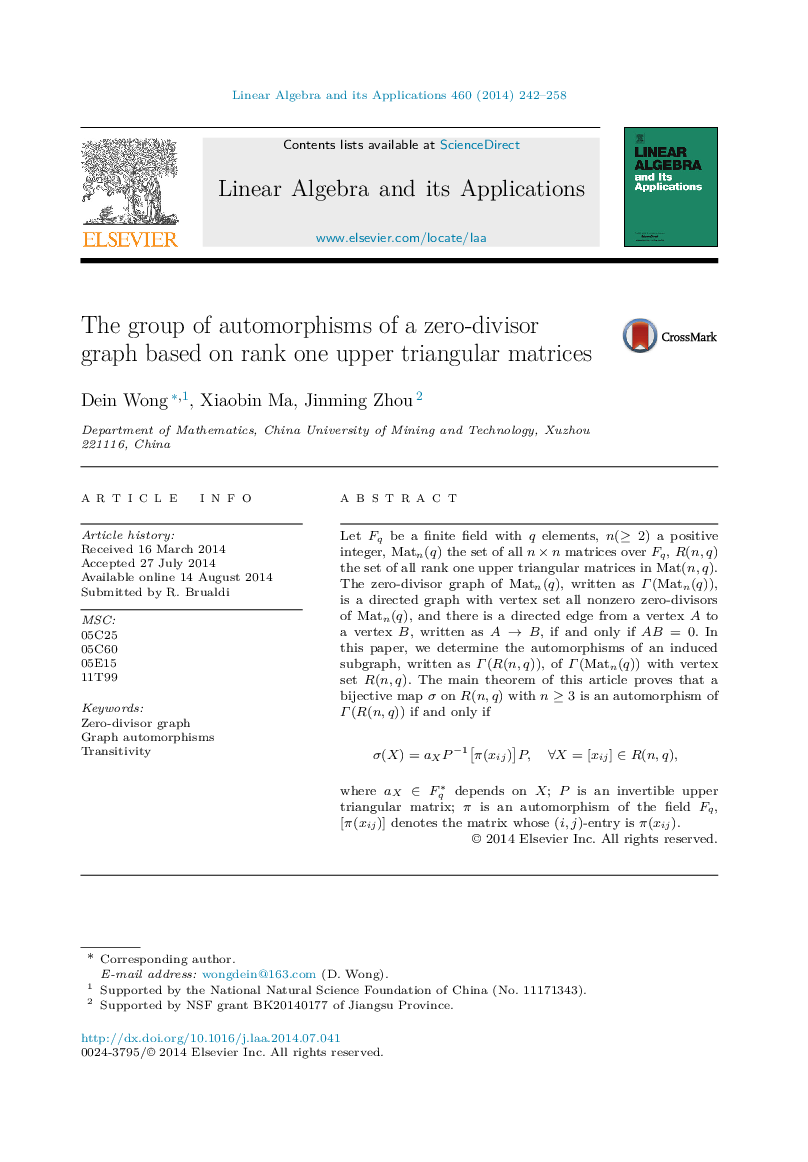| کد مقاله | کد نشریه | سال انتشار | مقاله انگلیسی | نسخه تمام متن |
|---|---|---|---|---|
| 4599390 | 1631135 | 2014 | 17 صفحه PDF | دانلود رایگان |
Let FqFq be a finite field with q elements, n(≥2)n(≥2) a positive integer, Matn(q)Matn(q) the set of all n×nn×n matrices over FqFq, R(n,q)R(n,q) the set of all rank one upper triangular matrices in Mat(n,q)Mat(n,q). The zero-divisor graph of Matn(q)Matn(q), written as Γ(Matn(q))Γ(Matn(q)), is a directed graph with vertex set all nonzero zero-divisors of Matn(q)Matn(q), and there is a directed edge from a vertex A to a vertex B , written as A→BA→B, if and only if AB=0AB=0. In this paper, we determine the automorphisms of an induced subgraph, written as Γ(R(n,q))Γ(R(n,q)), of Γ(Matn(q))Γ(Matn(q)) with vertex set R(n,q)R(n,q). The main theorem of this article proves that a bijective map σ on R(n,q)R(n,q) with n≥3n≥3 is an automorphism of Γ(R(n,q))Γ(R(n,q)) if and only ifσ(X)=aXP−1[π(xij)]P,∀X=[xij]∈R(n,q), where aX∈Fq⁎ depends on X; P is an invertible upper triangular matrix; π is an automorphism of the field FqFq, [π(xij)][π(xij)] denotes the matrix whose (i,j)(i,j)-entry is π(xij)π(xij).
Journal: Linear Algebra and its Applications - Volume 460, 1 November 2014, Pages 242–258
